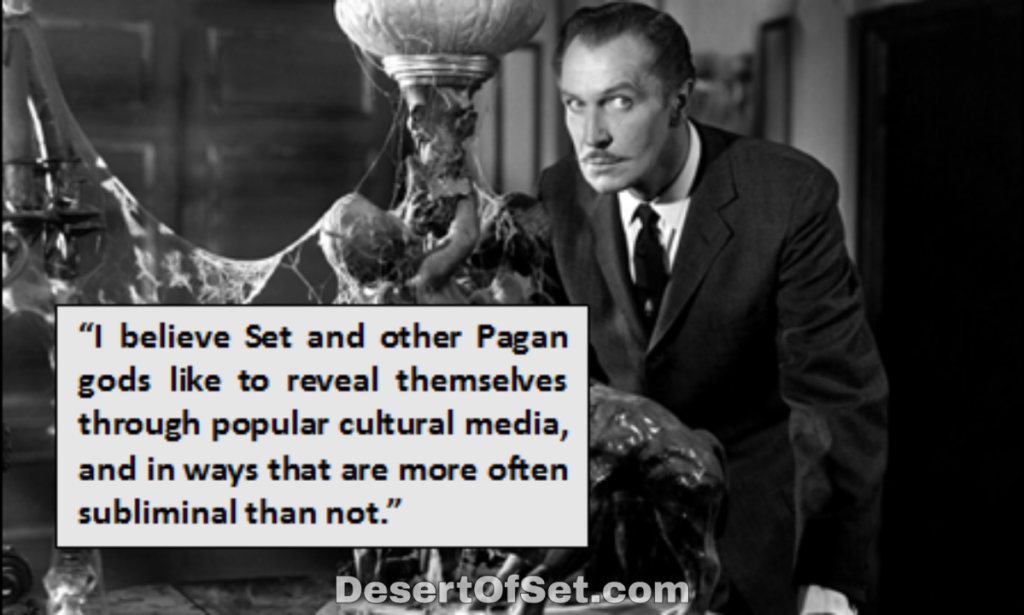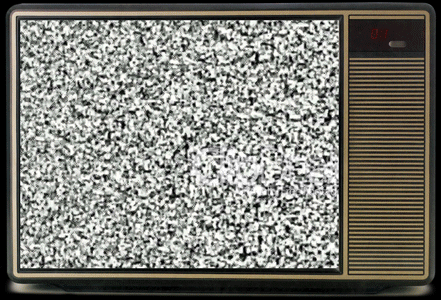Explaining the LV-426 belief that monster movies are more sacred and profound than any Kirk Cameron flick.

I enjoy interpreting films, TV shows, and popular music from a Setian perspective. This isn’t just a “hobby”; it’s an essential part of my spirituality. I believe Set and other Pagan Gods like to reveal themselves through popular cultural media, and in ways that are more often subliminal than not. It’s easy to recognize the Goddess Isis in that old 1970s TV show, The Secrets of Isis, where she’s an actual character who fights crime. But have you ever noticed how similar James Cameron’s The Terminator (1984) is to the myth of Isis fleeing from Set to ensure the safe birth of Horus? Just imagine that Sarah Connor is Isis, Kyle Reese is Osiris, the Terminator is Set, and John Connor is Horus; see what I mean?
I’m not suggesting that James Cameron actually did this on purpose. I just think one or more of the Gods probably reached into his brain back in 1984 and shuffled some stuff around in there while he was writing the script. I think this happens all the time, not just with James Cameron, but with potentially any filmmaker. I know it sounds silly or perhaps even “crazy,” but the idea that the Gods would leave “secret messages” for us to find in movies, TV shows, or even Saturday morning cartoons is no different from divining omens in tea leaves or the Zodiac. Just because these media are human inventions doesn’t mean the Gods can’t use them for their own purposes. If they can reveal themselves through clouds and trees and dreams, they can just as easily do the same thing through anything created by human hands.
“But G.B.,” I hear some of you asking, “What about things that are purposely inspired by Egypt? Things like Stargate SG-1?” Well my answer to that question is so complex, I had to write a whole other sermon about it to do the subject any justice. But with very few exceptions, I am almost never impressed with anything that’s intentionally inspired by Egyptian mythology.
I find that such works tend to fall into one of three clichéd categories:
- The “killer mummy” movies, in which the mummy is always some ancient evildoer who seeks to claim the modern reincarnation of his long-lost love. (This includes pretty much any film called The Mummy or that has the word “Mummy” somewhere in the title, like 1964’s The Curse of the Mummy’s Tomb.)
- The “ancient astronaut” movies, in which the Egyptian Gods turn out be gooey aliens that fly around in spaceships. (This would be where Stargate fits in.)
- The “biblical epic” movies, which all treat the book of Exodus like it’s a Gods-damn court transcript. (This includes such esteemed classics as The Ten Commandments, The Prince of Egypt, and Exodus: Gods and Kings.)
You’d expect there to be more of Set in something like Gods of Egypt (in which He’s an actual character) than there is in a movie like the original Godzilla from 1954 (which has nothing to do with Egypt on the surface); but I find the opposite is more often true. Whenever Egyptian mythology is intentionally adapted into fiction, the result is often far less interesting than the original source material. Cinematic portrayals of Set in particular have absolutely nothing to do with how anyone has ever worshiped Him in real life. (The next time you watch the original Conan the Barbarian from 1982, bear in mind that feeding naked women to giant snakes has never been a standard feature of Setian religious practice.) Yet there are other creative works that don’t intentionally invoke Set in any way, but which do so serendipitously, and which are more consistent with actual Setian ideas and values. This to me is a sign that these films have been “touched” by Set, especially if the people who created them have never heard of Him before.
In my opinion at least, the films that seem to resonate with Set the most are monster movies—sci-fi, horror, and fantasy romps that feature aliens, giant animals, mutants, supernatural beasties, or even cryptids like Bigfoot or the Loch Ness Monster. No matter what creatures they might feature, all monster films are about chaos intruding upon the world of order. Sometimes this chaos is caused by forces external to humanity (as with alien invaders), and sometimes it’s caused by human monsters (as with serial killers). Sometimes the chaos is visited upon the innocent (making the story a tragedy, or an example of when bad things happen to good people), and sometimes it falls upon the wicked (making it a morality tale, or an example of when bad people get their comeuppance). Either way, it all boils down to the eternal struggle between order and chaos, light and darkness, creation and annihilation.
You’re probably wondering why a minister would take such a serious interest in this kind of subject matter. (After all, aren’t religious people supposed to think that monster movies are “sick” at best or “satanic” at worst?) The truth is, I think monster tales are the oldest kind of story known to humankind. Sure, epic adventures and steamy romances have been with us a long time too, but the one emotion our earliest ancestors were probably most familiar with was fear.
Consider what John Goodman says in Joe Dante’s Matinee (1993):
A zillion years ago, a guy’s living in a cave. He goes out one day, Bam! He gets chased by a mammoth. Now he’s scared to death, but he gets away. And when it’s all over with, he feels great […] So he goes home, back to the cave, the first thing he does, […] he does a drawing of the mammoth. And he thinks, “People are coming to see this. Let’s make it good. Let’s make the teeth real long, and the eyes real mean.” Boom! The first monster movie.
When you think about it, fear has motivated people to do many things. It motivated our ancient ancestors to band together, hunt for food, develop agriculture, and establish laws to prevent themselves from killing each other. It also motivated them to tell stories, to put their faith in higher powers, to repel misfortune with charms and magic, and to hope for a better life in the great hereafter. In short, fear is just about the mother of everything that’s included in human civilization, including religion.

There’s even an element of the monstrous in religion itself. The theme of chaos intruding upon order appears in every religious mythology. Every pantheon of Gods must contend with at least one horrific monstrosity that wants to destroy us all:
- In the Coffin Texts (dating to circa the 20th century BCE), Set is and will always be defeating the monster
Apep.
- In the Babylonian Enuma Elish (dating to the 7th century BCE), the God Marduk slays the dragon Tiamat and creates the cosmos from her corpse.
- In Hesiod’s Theogony (dating to the 7th century BCE), the Olympian Gods defeat the gigantic Titans and bury them within the earth.
- In Psalm 74 (dating to 586 BCE), Yahweh slays Leviathan and feeds it to his saints at the end of time.
- In Revelation 20 (dating to 81–96 CE), Christ defeats Satan and Antichrist, casting them both into a lake of fire.
- In the Bundahishn (dating to the 9th century CE), Ahura Mazda destroys the monster Ahriman and rehabilitates the damned.
- In the Poetic Edda (dating to the 13th century CE), the Aesir and Vanir will kill and be killed by the frost giants of old.
Every monster film echoes one or more of these combat myths on some basic level. Even in the original Friday the 13th (1980), the character of Pamela Voorhees (played by Betsy Palmer) is really just another Tiamat, and the camp counselor Alice (Adrienne King) is the stand-in for Marduk. The characters and circumstances are quite different, but the story is essentially the same, and it’s the oldest story in the world.
Many faiths also have some horrific notion of what might happen if people just stopped practicing religion altogether. The Gods might abandon us; the dead might rise up to torment the living; the whole world might fall apart; and so on. Films like The Birds (1963) and The Mist (2007) may not seem to have anything to do with religion on the surface, but each depicts some stern, cosmic judgment against humanity for its collective sins. And the number of films that depict vengeance upon the living by the restless dead—such as Poltergeist (1982) and A Nightmare on Elm Street (1984)—is in the thousands. For these reasons, I think monster films are the finest medium for religious expression and interpretation, superior even to most overtly religious films. There is far more divinity and truth to be found in something like It Came from Outer Space (1953) than there is in, say, Kirk Cameron’s Saving Christmas (2014).
Now praise Set, and pass the remote!

